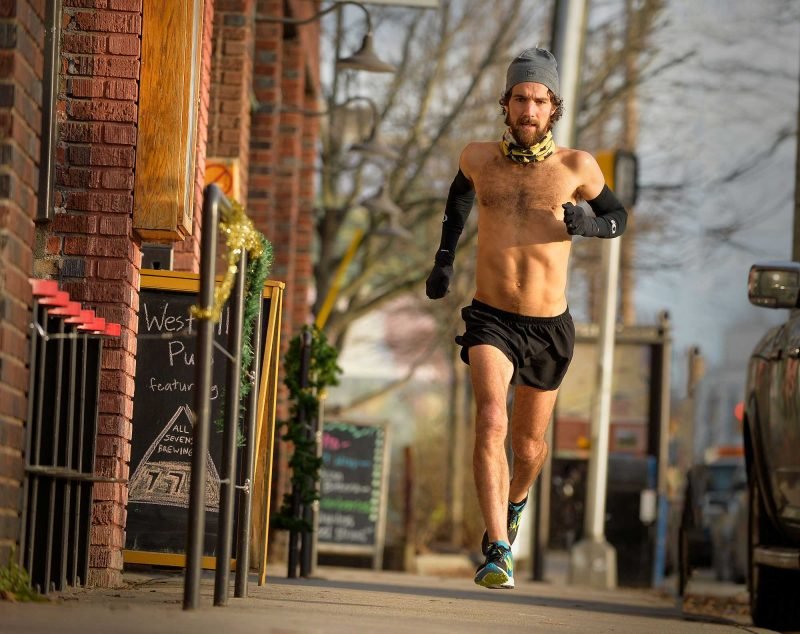Winter Running: How to Beat the Winter Blues
by Stephanie Miller
When I lived in Colorado, winter was a way of life. When the snow hit, you either grabbed your skis or snowboard and spent the day out in the sunshine, soaking up plenty of Vitamin D and breathing in crisp, mountain air. Roads were plowed, schools were open, and the fresh powder made everyone giddy.Here in North Carolina, not so much. When it snows, everything shuts down; a mere snowflake sends school administrators into a sheer frenzy. The fresh, fluffy stuff lasts just long enough for one good snowball fight and then it’s a sloppy, muddy mess by day, black ice by night. Mix that in with less daylight, and it’s easy to see why we can get a little cranky during the winter. Some may even battle with depression, otherwise known as the winter blues or SAD (Seasonal Affective Disorder).But exercising can help beat the blues, and studies show that running or walking during the winter can be very beneficial to your mood and well-being. The key is to get out there, despite the cold temperatures. Need motivation? Sign up for a race. Find a running partner who will hold you accountable. Or end all your runs at a brewery (maybe that’s just me). Running in the winter can actually be an exhilarating experience, as long as you have the right gear and frame of mind.
Winter running tips
Asheville resident and regular runner Luke Paulson has some great tips to share for winter running. Luke runs about 100-115 miles a week, no matter what Mother Nature throws at him. His first tip: No excuses.“Put on some clothes and get a foot out the door,” says Luke. Tip #2: Avoid anything made out of cotton. Once cotton gets wet, it stays wet, which can be uncomfortable and dangerous in cold weather. Your skin is more likely to chafe, and your feet are more prone to blisters in cotton socks. Runners should wear technical fabrics that wick the sweat away from your body, such as Thinsulate, Thermax, DryFit, CoolMax, polypropylene or silk.
“There is no bad weather, only inappropriate clothing.”
Tip #3: Don’t overdress. Wear less fabric because you’ll warm up faster than you think. A good rule of thumb is to dress like it is 15 to 20 degrees warmer than it actually is. Tip #4: If it’s windy outside, wear wind-resistant tops, gloves and hats. Wind-resistant gear helps prevent the wind from “sucking” your body heat away from your body. Tip #5: Keep your hands warm with a nice pair of running gloves (or two). Gloves should be the first “winter” clothing item to wear, then a long-sleeve running shirt, pants and hat. For extra warmth, try Little Hotties Hand Warmers, which keep your hands warm for about six hours. There’s also Little Hotties Toe Warmers to keep your shoes nice and toasty. Tip #6: A good winter hat will prevent heat loss from your head, keeping you comfortable and safe during winter conditions. Hats that keep your ears warm and protected are best, and Luke suggests Boco Jus’ Running hats, Brooks and Buff. Headbands and Buff neck gaiters are also recommended. Tip #7: If you plan on running in the snow, buy yourself a pair of Yaktrax Run. These are straps that go around the bottom of your shoes and provide traction on packed snow and ice. They have removable spikes and steel coils so you can feel confident running in slippery winter conditions and not fall on your a$$. Tip #8: If you’re running at night, wear reflective gear such as Blinkies, reflection vests and headlamps.
Keep running no matter what
Don't stop running or walking just because it's winter. Whether you're a serious runner, an occasional runner or you like to walk to keep fit, stick to your routine."It will be so much easier to pick things back up once spring rolls around if you maintain a decent base throughout the winter months," says Luke. Don't forget that hat though before you run out the door. Shirts are optional, however.
Photos courtesy of Wright Creative, Inc




